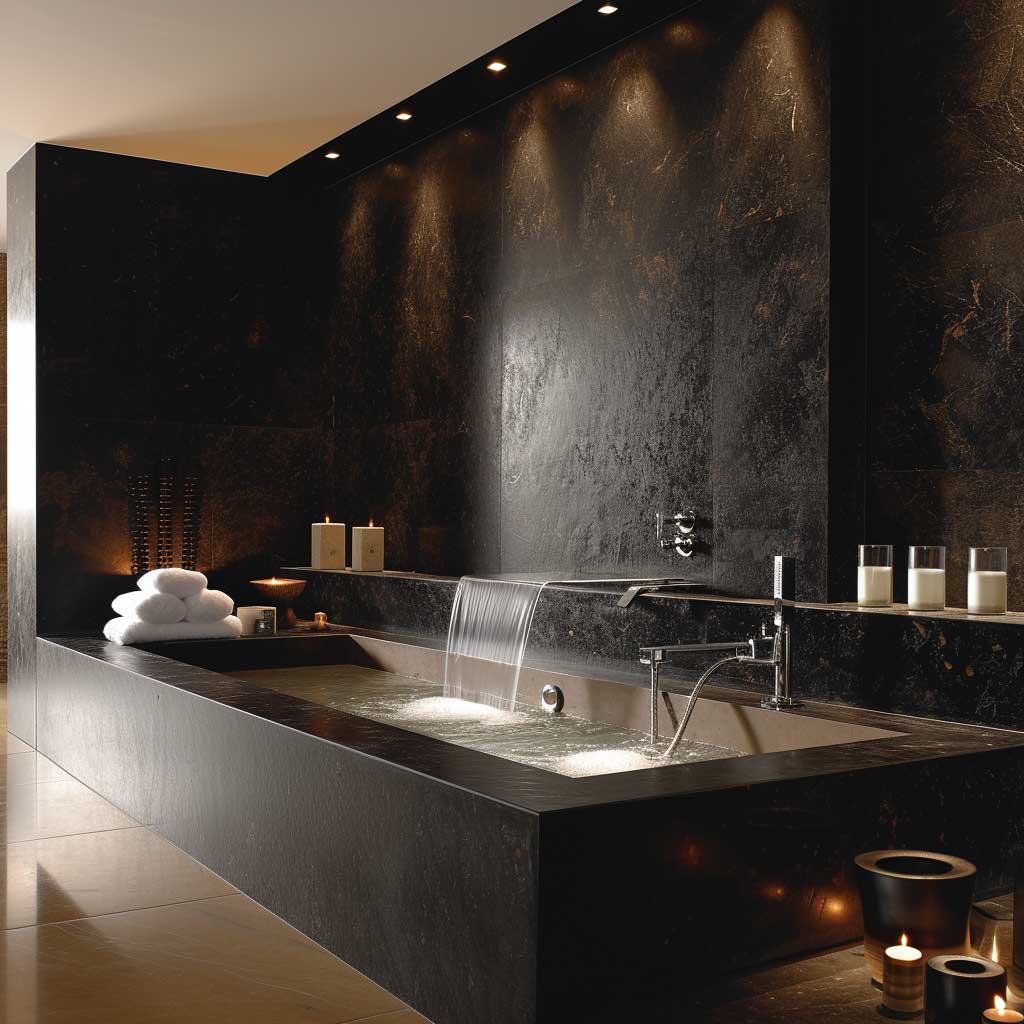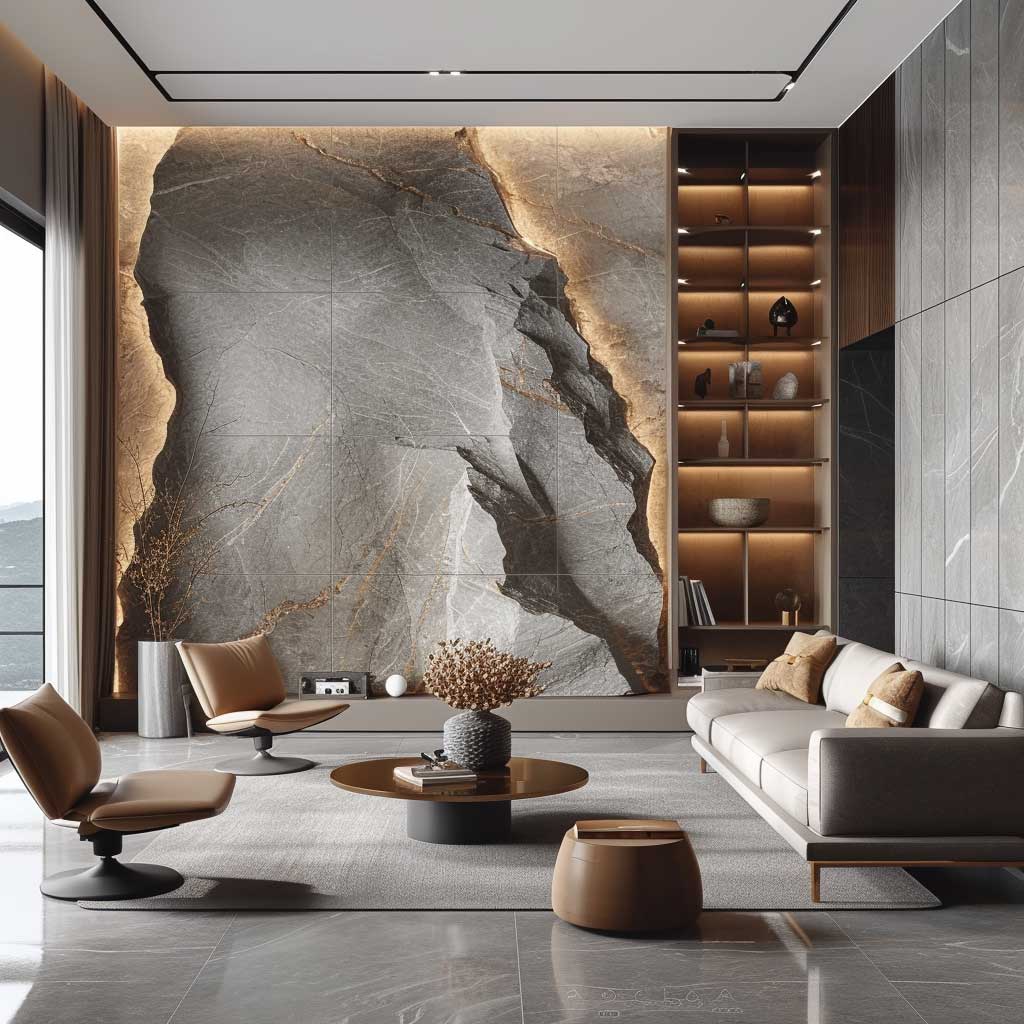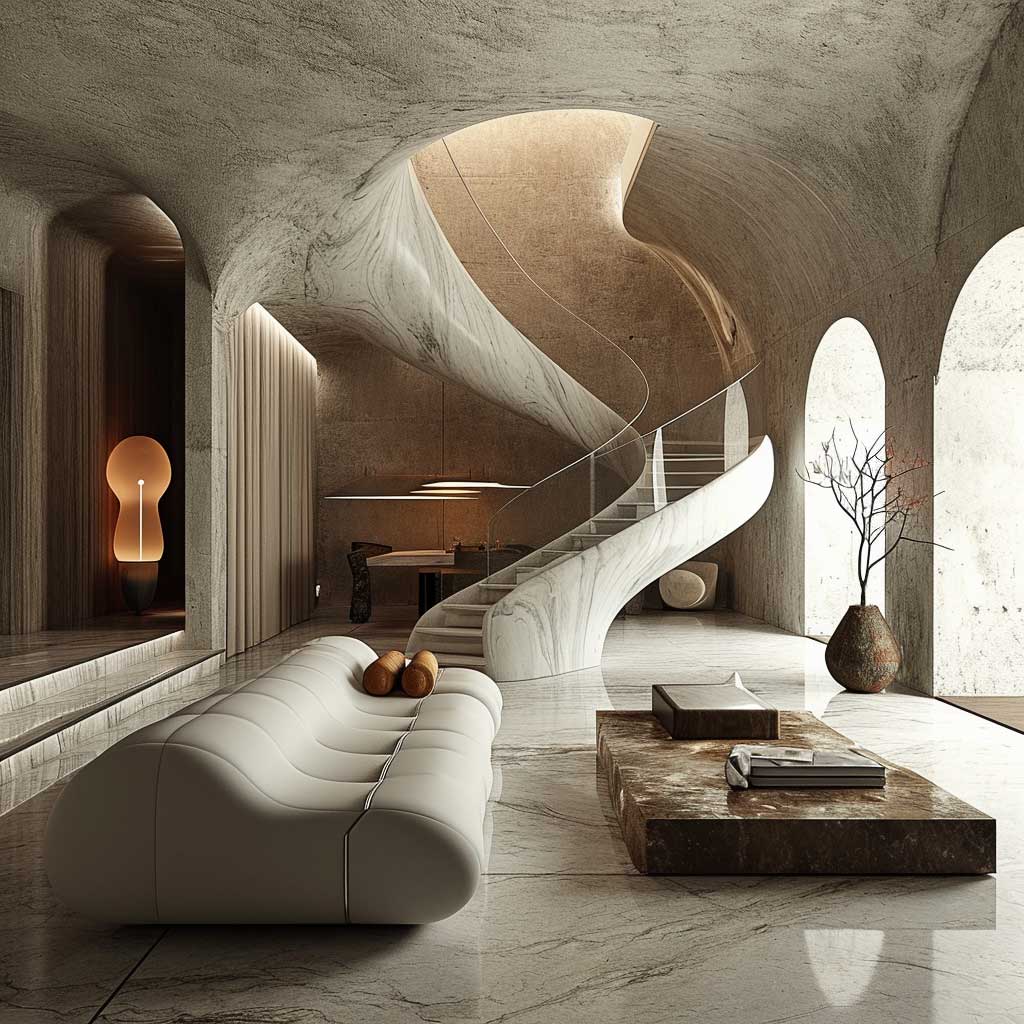Content
In the realm of architecture and interior design, the essence of a space is often captured through its tactile and visual elements. Among these, the use of natural materials stands out for their inherent ability to create atmospheres that are both inviting and profound. Stone, with its rich texture and diverse hues, plays a pivotal role in crafting settings that exude intimacy and warmth. This essay delves into how stone walls, a testament to both nature’s artistry and human craftsmanship, significantly enhance indoor environments, making them feel more connected, serene, and timeless.








| Architects | https://yuanarch.com/ |
| Images | https://www.behance.net/yuchenchao |
Embracing Natural Beauty
Stone walls naturally draw the eye, celebrating the unique imperfections and color variations inherent in the material. In a living room, a stone accent wall becomes a focal point, offering a canvas that is both ancient and ever-changing with the light. The texture of stone adds depth and character to spaces, making them feel grounded and connected to the outdoors.
The diversity in stone, from smooth river rocks to rustic fieldstone, allows designers to tailor spaces to evoke specific atmospheres. A bathroom with slate walls can feel like a serene spa, while a kitchen with limestone accents might feel bright and welcoming. This adaptability makes stone an ideal choice for creating bespoke environments that resonate on a personal level.
Stone’s tactile quality encourages physical engagement with a space. Touching a stone wall can connect one to the earth, providing a sense of stability and calmness. This sensory interaction enriches the experience of a space, making it more memorable and emotionally resonant.
Incorporating stone into a space doesn’t just appeal to the visual senses; it also adds an acoustic dimension. Stone walls can alter the sound dynamics of a room, absorbing noise and creating a quieter, more tranquil environment. This auditory effect further enhances the intimate atmosphere of stone-clad interiors.






A Sanctuary of Warmth
Stone’s ability to absorb and radiate heat contributes to creating a comfortable ambiance. In winter, a stone fireplace not only serves as a gathering point but also efficiently warms the space, enveloping it in a cozy warmth that synthetic materials cannot replicate.
During the summer, stone walls can help keep a house cool, reducing the reliance on artificial cooling systems. This natural temperature regulation ensures that homes are not only comfortable year-round but also more energy-efficient, which is both cost-effective and environmentally friendly.
The psychological effect of warmth associated with stone materials cannot be understated. In settings where stone is used, there’s a perceptual warmth that makes the space feel more welcoming and secure, fostering a sense of well-being and comfort among its inhabitants.
The thermal properties of stone also contribute to its practicality in various climates. Homes in hotter regions benefit from stone’s cool-to-the-touch surface, while those in colder areas enjoy the slow release of stored heat, demonstrating the material’s universal appeal.






The Timeless Appeal of Stone
Stone walls evoke a sense of permanence and durability that few other materials can. This timeless quality ensures that spaces not only look magnificent today but will continue to do so for generations, making stone a wise investment for future-proofing a home’s design.
The historical significance of stone in architecture connects our personal spaces to a broader narrative, enriching our homes with stories and traditions. This link to the past brings depth and soul to modern interiors, inviting a dialogue between eras.
Stone’s enduring appeal lies in its versatility. Whether shaping a rustic country home or adding edge to a contemporary apartment, stone walls integrate seamlessly with any design ethos, proving that true beauty transcends fashion.
As trends come and go, stone remains a constant, embodying the idea that some aspects of design are universal. This resilience against the whims of style makes stone a cornerstone for those looking to create spaces with lasting significance.




Sustainable and Eco-Friendly Choices
Choosing stone reflects a commitment to sustainability. As a naturally occurring material, it requires minimal processing and has a low environmental impact compared to synthetic alternatives, aligning with the ethos of eco-conscious living.
The durability of stone means it doesn’t need to be replaced often, reducing waste and promoting a more sustainable approach to interior design. In an era where the environmental cost of materials is increasingly under scrutiny, stone stands out for its minimal footprint.
Incorporating stone into buildings can improve energy efficiency, thanks to its natural insulation properties. This not only makes homes more comfortable but also reduces energy consumption, contributing to a healthier planet.
The push towards green building practices has highlighted stone as a key material in achieving both aesthetic and environmental goals. Its use in design is a testament to the balance between human needs and ecological responsibility, showcasing how beauty and sustainability can coexist.


Through its natural beauty, ability to create a warm sanctuary, timeless appeal, and sustainability, stone remains an unparalleled choice in interior design. The rich texture of stone walls not only elevates the visual and tactile experience of indoor settings but also embodies a profound connection to the earth, history, and future-forward thinking. As we continue to seek materials that offer both aesthetic and environmental benefits, stone stands as a testament to the enduring power of natural elements in shaping our habitats.






